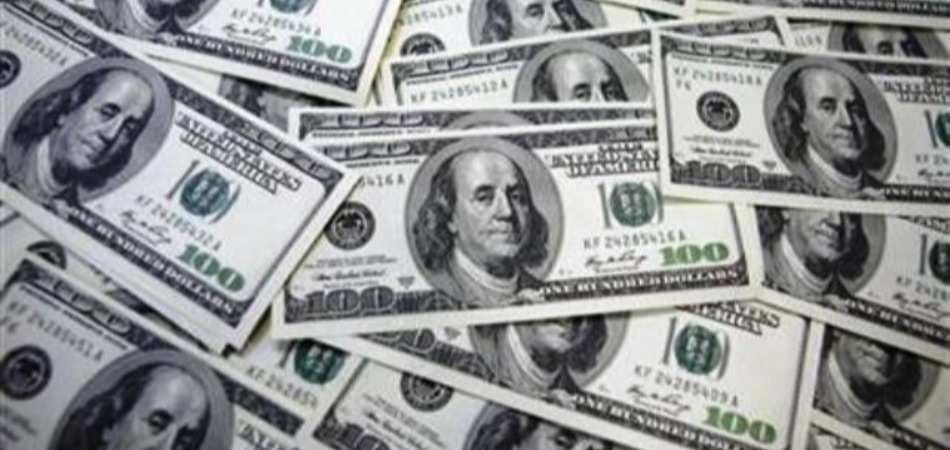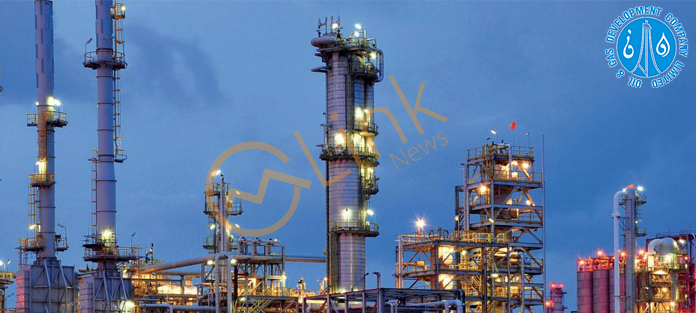FY19 in retrospect - what's past is prologue

MG News | July 02, 2019 at 09:20 AM GMT+05:00
July 2, 2019 (MLN): The sun has set on a rather difficult year for Pakistan and as we step into fiscal year 2019-20 (FY20), a look back at last year’s ordeals is in order to evaluate the economy’s progress against its position at the commencement of the year.
Anyone who has even remotely followed the trials and tribulations of the past few months will agree without a second thought that Pakistan is presently in a state of crisis. Provided that the country’s economy was sacrificed to politics for past couple of years, the effort to restore its long lost glory comes with a hefty price and the nation must pay its dues before the long-awaited day finally arrives.
Pakistan’s economy before the present government’s tenure began, was a product of pure neglect. It was a country where politics took center stage for the longest time and no one seemed to be consciously navigating where the economy was headed. By the time the next election neared, the authorities were out of time to fix the damage they had caused.
After years and years of pitching, burning the midnight oil and repeatedly claiming himself worthy of leading a country like Pakistan which was in dire need of an honest and competent leader, former cricketer and founder of the political party Pakistan Tehreek-e-Insaf (PTI), Mr. Imran Khan won the elections in July 2018 and took over as Pakistan’s Prime Minister on August 18, 2018.
The principal factor that won Imran his position was that the people of Pakistan saw immense potential in him and his promises to ease the difficulties faced by multitudes on a daily basis in shape of soaring inflation, fading resources and lack of jobs.
However, 11 months down the line, the nation is treading on an even jagged terrain with inflation soaring higher than even before, foreign reserves depleting, interest rates shooting, Rupee going through sharp devaluation and the equity markets mirroring the rest of the economic indicators.
Let’s take a look at each of these economic indicators in detail:
Inflation:
Average inflation for July-May 2019 stood at 7.19% against 3.81% recorded for the corresponding period of last year. For the complete fiscal year 2019, the average inflation is expected to log in at around 7.4% which is a massive stride from inflation in FY18.
According to a research note penned at Spectrum Securities, this surge in inflation is a result of increase in energy prices – including electricity, gas and fuel – and a hike in import duties that was imposed in the mini budget presented by the former Finance Minister Mr. Asad Umar
Moreover, higher prices for food, transport facilities and housing index contributed generously to the soaring inflation as well.
Policy Rates:
Bearing in mind the inflationary outlook in Pakistan throughout the year, the State Bank of Pakistan (SBP) has not once shied away from reaching out to contractionary fiscal policies in their Monetary Policy meetings that were conducted every alternate month.
As a result, the key policy rate has leapt from 6.5% at the beginning of the year to 12.25% at present. As planned, this has dried up consumption and slowed down economic growth sharply, so that the GDP contracted to an annual growth rate of only 3.3% in FY19. During the year, only the services sector performed well with a 4.7% growth.
While this throws shade at the central bank, it must be realized that such a step was also a requirement for the International Monetary Fund (IMF) bailout programme – an escape route that no matter how hard the government tried to escape, was ultimately utilized.
IMF and other helping hands:
Having spoken at length about the cons of resorting to an IMF programme and the viscous tax net that has kept Pakistan trapped for so long, Prime Minister Imran Khan went all out in his efforts to pull money from alternate avenues in order to rescue the falling economy and to meet the payment schedules.
His first attempt was to approach countries that are on good terms with Pakistan. This got him a promised sum of $16.6 billion as loan from Saudi Arabia, China, United Arab Emirates (UAE) and Qatar jointly.
Saudi Arabia pledged a payment of $6 billion to support Pakistan’s balance of payment crisis, $3 billion of which has now been deposited with SBP and the remaining $3 billion was agreed under deferred payment facility for oil imports.
Apart from this, UAE promised $3 billion, Qatar promised $3 billion under direct investment while China agreed to lend $4.6 billion to Pakistan.
In addition to this, Pakistan is also expecting $1 billion each, from ADB and World Bank.
However, the raised sum still fell short of meeting the requirement so Khan, like others, had to resort to the IMF which offered a $6 billion Extended Fund Facility (EFF) for a period of 3 years.
As predicted, this bailout carried its own baggage that weighed down Pakistan’s economy. An IMF programme required higher Interest rates, higher tariffs, and withdrawal of subsidies on top of devaluation of Pakistani Rupee.
Foreign Exchange Reserves:
The foreign exchange reserves held by State Bank of Pakistan have depleted sharply by $2.6 billion in the first 11 months of current government as they stood at $14.35 billion as of June 21, 2019, as compared to $16.39 billion in August 2018.
Ironically, the amount of reserves went down significantly in spite of the financial support received from the friendly countries.
PKR devaluation:
During FY19, the Pakistani rupee (PKR) hit an all-time low of 164.06 (on June 27, 2019, yesterday) and a year high of 121.54 (on July 9, 2018) while overall depreciation for the year stands at a net of Rs.38.55 or 31.73% against USD as the local currency had ended last fiscal year at 121.50 per dollar.
Spectrum Securities has labeled devaluation as the “root cause of all disease” as the massive depreciation of PKR has fueled inflation. Furthermore, rupee is expected to depreciate further under a free-float exchange rate mechanism agreed with IMF, piped in the brokerage house.
Equity Market:
As mentioned before, the equity market mirrored the fate that met the rest of the economic indicators.
The Karachi Stock Exchange (KSE) – 100 index has lost over 8,000 points in the last year, securing an annual peak of 43,638 points and a low of 32,352 points. The benchmark index declined by 19% over the year and concluded it at 33,901 points on Friday.
Spectrum Securities has termed FY19 as the most uncertain year in stock market history while pointing out that the index has been suffering worst annual losses for the last two years and a similar trend was witnessed during the financial crisis in 2008.
In its research note, they have further added that “change in the taxation regime and higher foreign outflows posted, along with turmoil in the politics, has more than disturbed the local bourse.”
In addition to this, JS Global highlighted that PKR’s dismal performance in the MSCI emerging market (EM) space, had another role to play in the abject performance of local bourse which led the Pakistan Stock Exchange (PSX) to becoming the worst performing equity market in EM in recent times.
Resultantly, equity investors stationed overseas were also more inclined towards selling securities as the net sale witnessed through the year logged in at almost $356 million.
Similarly, mutual funds and brokers were also net sellers of $146 million $15 million.
On the brighter side, narrowing deficits:
Higher import duties, soaring interest rates and depreciating value of rupee collectively narrowed down the 11 month current account deficit for July – May 2019 by 29% to $12.7 billion.
The improvement was clearly a result of drop in imports of the country and a noticeable rise in worker remittances by 10% during the aforesaid period.
The imports of goods declined by 6% to $48.4 billion and imports of services declined by 14% to $8.8 billion thus bringing the balance on trade in goods and services down by 12% to $30 billion as compared to $34.2 billion in the corresponding period of last year.
While the narrowing deficit serves as a silver lining in this scenario, the government paid quite a heavy price for it.
Whom to blame?
A detailed analysis on Pakistan’s economy in FY19 gives rise to a rather tricky and an open-ended question that, if left unanswered, has the potential to kindle further mayhem. The question is; whom to blame?
No matter how difficult it becomes, one can’t overlook the fact that Pakistan had this crisis coming for a very long time and the authorities previously charged with the responsibility to look after the economy were so engrossed in handling their political careers that they were oblivious to the forthcoming iceberg of their own making.
Having said that, it is unfair to put the entire blame on the incumbent government’s already loaded shoulders. However, standing almost a year apart from the beginning of their tenure, the economy now belongs to this government and they can’t dodge the responsibility for its current predicament.
Although the office is seen making efforts every now and then, the results are hardly visible despite one too many budget announcements, and this aggravates the general public even more.
It seems that in his obliviousness and lack of experience with the office, PM Khan might have promised much more than he had to offer and apparently, that alone is turning against him.
Copyright Mettis Link News
Related News
| Name | Price/Vol | %Chg/NChg |
|---|---|---|
| KSE100 | 136,502.54 259.91M |
1.64% 2202.77 |
| ALLSHR | 85,079.90 838.35M |
1.26% 1061.74 |
| KSE30 | 41,552.62 97.27M |
1.81% 738.33 |
| KMI30 | 193,330.76 84.69M |
0.39% 741.60 |
| KMIALLSHR | 56,315.31 366.02M |
0.43% 243.06 |
| BKTi | 38,498.08 37.91M |
4.13% 1526.33 |
| OGTi | 28,138.38 5.66M |
-0.36% -101.89 |
| Symbol | Bid/Ask | High/Low |
|---|
| Name | Last | High/Low | Chg/%Chg |
|---|---|---|---|
| BITCOIN FUTURES | 120,260.00 | 123,615.00 118,675.00 |
1730.00 1.46% |
| BRENT CRUDE | 69.16 | 71.53 69.08 |
-1.20 -1.71% |
| RICHARDS BAY COAL MONTHLY | 97.50 | 0.00 0.00 |
0.25 0.26% |
| ROTTERDAM COAL MONTHLY | 106.50 | 106.60 106.50 |
-2.20 -2.02% |
| USD RBD PALM OLEIN | 998.50 | 998.50 998.50 |
0.00 0.00% |
| CRUDE OIL - WTI | 66.92 | 69.65 66.84 |
-1.53 -2.24% |
| SUGAR #11 WORLD | 16.31 | 16.67 16.27 |
-0.26 -1.57% |
Chart of the Day
Latest News
Top 5 things to watch in this week
Pakistan Stock Movers
| Name | Last | Chg/%Chg |
|---|
| Name | Last | Chg/%Chg |
|---|



